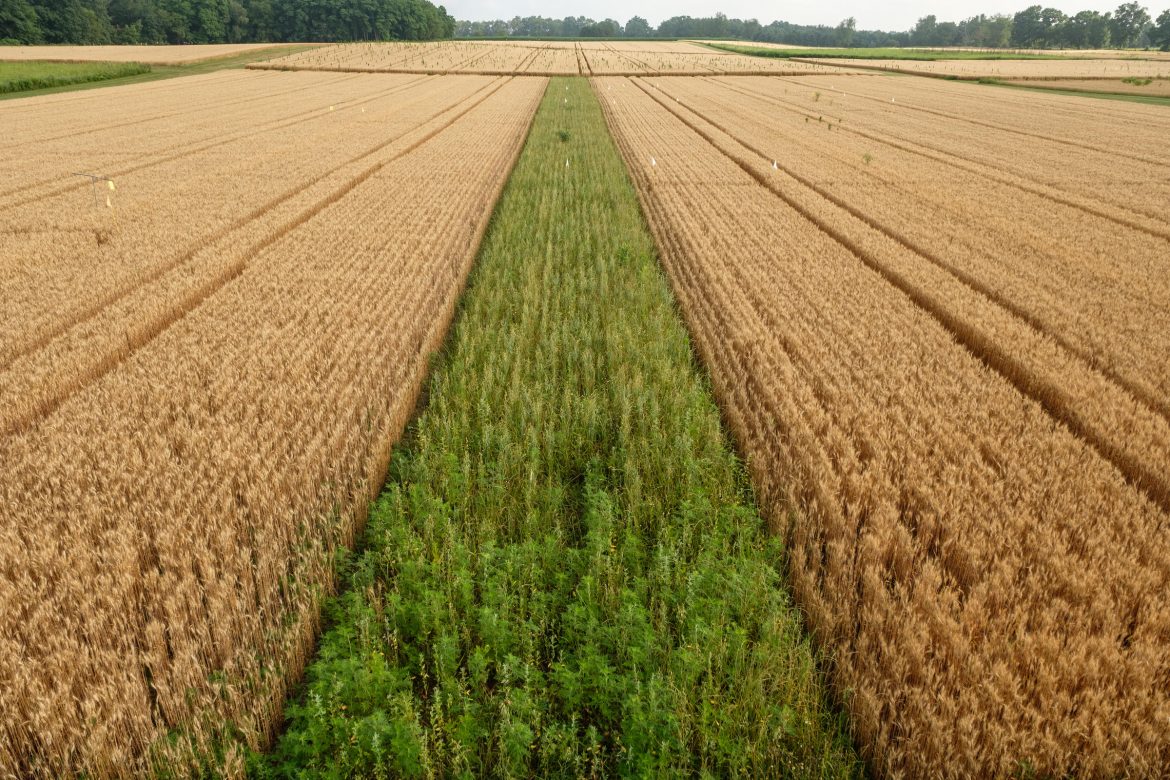
Farmland at Michigan State University’s Kellog Biological Station. Image: Nick Haddad
By Stephanie Rauhe
Fertilizer is an essential resource for farmers, but as prices rise, paying for it makes their job more difficult.
A 2023 study by the MSU Agriculture Product Center showed that fertilizer accounts for the highest cost per acre compared to other products, such as seed and machinery repairs.
“We had lows in fertilizer costs around 2020, but since then, we’ve seen a lot of volatility in prices,” said lead economist Loren Koeman, the lead manager of the Industry, Conservation and Regulatory Relations Department at the Michigan Farm Bureau.
There are three main types of fertilizer: nitrogen, phosphate and potash, according to the department.
The COVID-19 pandemic was partly responsible for higher fertilizer prices as it disrupted the supply chain, and production and shipping of fertilizer became more challenging, according to the U.S.D.A. Economic Research Center.
“We saw huge run-ups with peaks in that 2022 to 2023 time frame where prices went up four to five times,” Koeman said. “We’ve somewhat settled back down, but prices are about double what they historically have been, back in 2018 or 2019.”
A farmer in Portland, Jeff Sandborn, is also a district director of the Farm Bureau and represents members in Ionia, Barry, Kent, Ottawa and Allegan counties.

Farm Bureau district director Jeff Sandborn grows 1,800 acres of corn, soybeans and wheat in Ionia County, Michigan. Image: Michigan Farm Bureau
“When it comes to fertility costs and fuel, fertilizer pretty much generates the bulk of the impact,” said Sandborn, who grows corn, soybeans and wheat. “It has just been weird since COVID because the supply chain has been out of whack.”
In 2020, Russia and Belarus were the world’s leading fertilizer exports, producing around 20% of global trade, followed by China and Canada, according to the department. The Russian invasion of Ukraine in 2022 drove prices even higher.
The cost to fertilize an acre of corn for Sandborn in 2023 was $260.
The 2023 commodity costs and returns data from the department showed fertilizer accounting for around 45% of U.S. wheat and corn farms costs, while the cost for soybean farms is 23%.
Data showed that new acres of wheat and corn decreased in Michigan in 2022, but soybean acreage increased, due to the lower fertilizer costs. As of June 2023, corn and wheat planting began to increase, and soybean acres remained about constant.
“I think we’ll see that balance somewhat come back as the corn versus soybean price changes,” Koeman said.
Stephanie Rauhe reports for Capital News Service